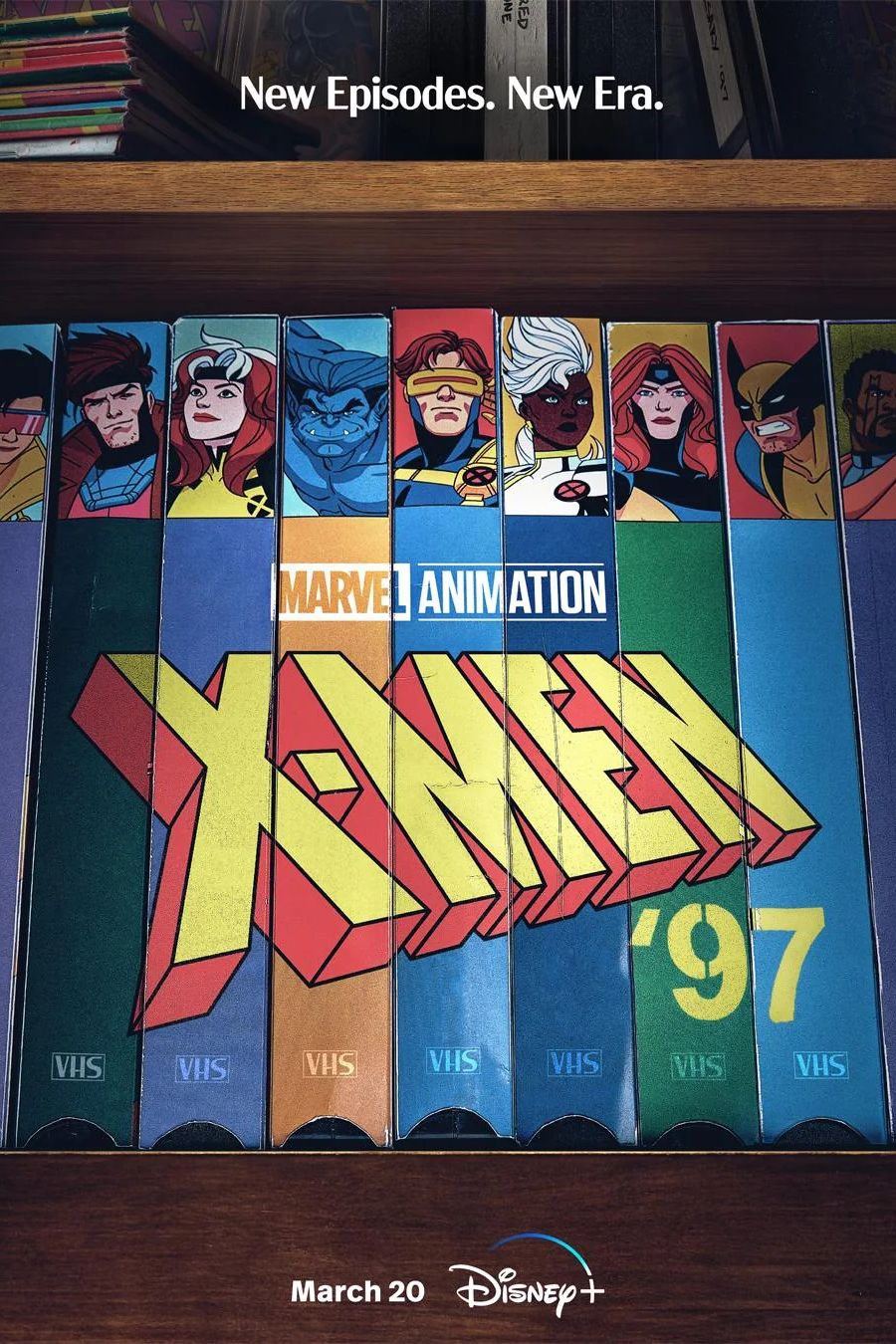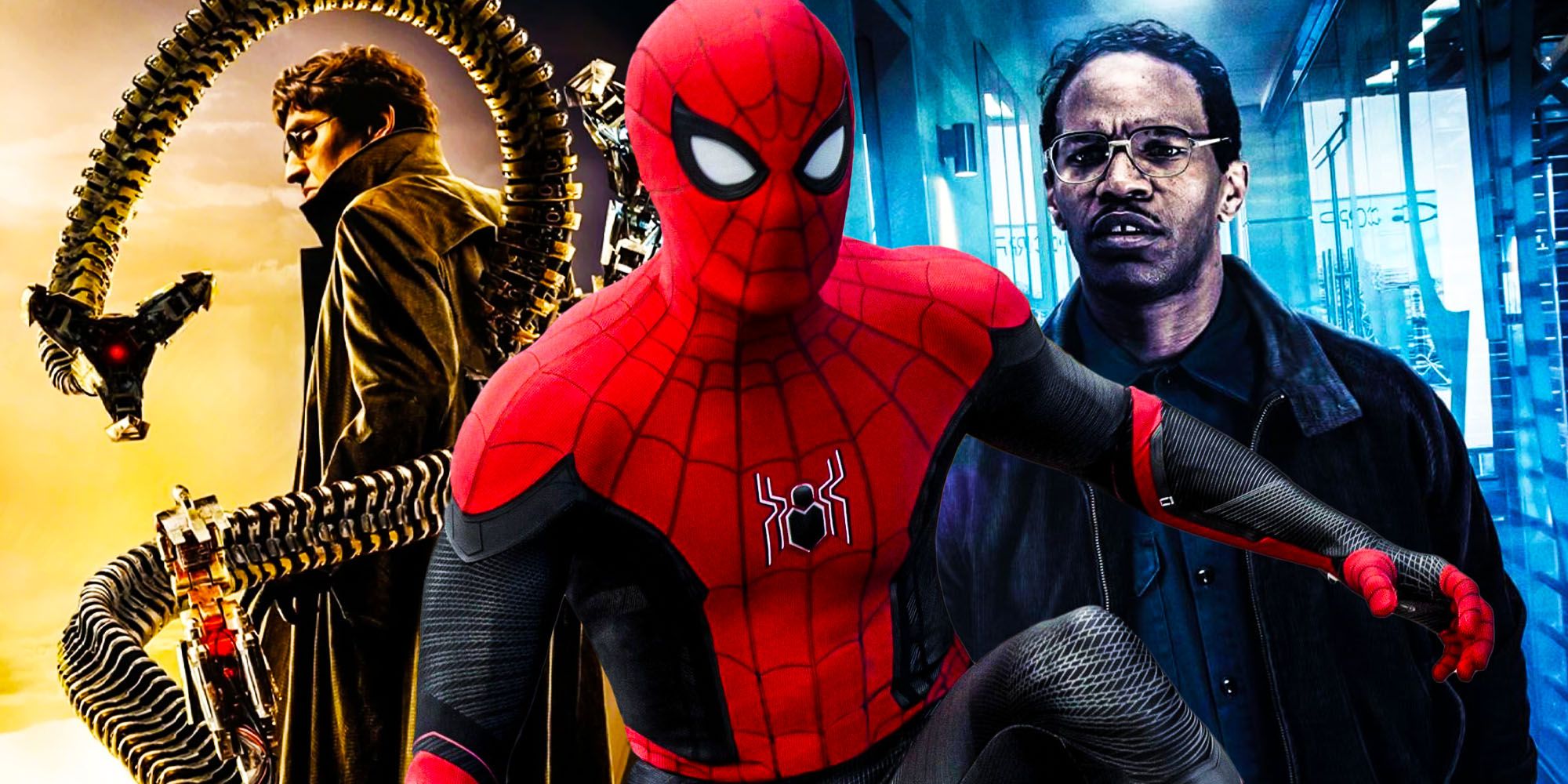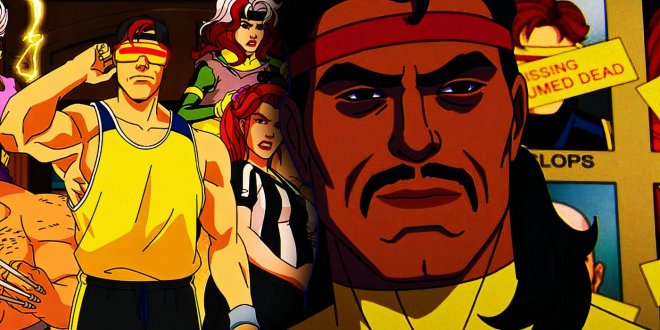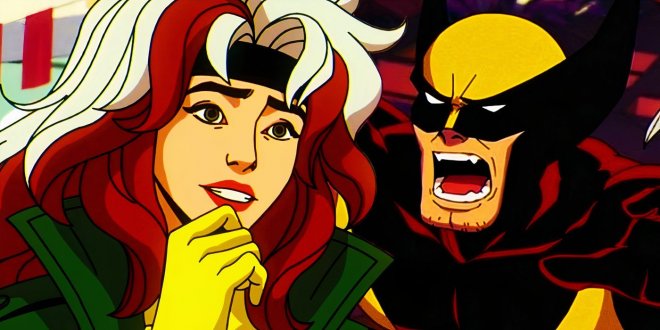10 X-Men Stories The Animated Series Did Better Than Fox"s Movies
Summary
X-Men: The Animated Series covered most of the famed X-Men storylines during its original broadcast from 1993-1997. The beloved series is being revived by Marvel Studios on Disney+ as X-Men '97, recommencing the narrative with the same stellar X-Men line-up. While X-Men '97 will not be part of the MCU timeline, it's the first X-Men adaptation released by the mighty franchise and promises to maintain X-Men: TAS's deft characterization and storytelling.
![]() Related 10 Best Episodes Of X-Men: The Animated Series X-Men: The Animated Series is one of the greatest animated shows of all time, with several incredible episodes that hold up to modern scrutiny.
Related 10 Best Episodes Of X-Men: The Animated Series X-Men: The Animated Series is one of the greatest animated shows of all time, with several incredible episodes that hold up to modern scrutiny.
10 Angel's Transformation In Archangel Depicted In X-Men: Apocalypse (2016)![]() Angel's transformation into Archangel was underwhelming in the live-action movies, only touched upon briefly in X-Men: Apocalypse when Apocalypse amplified each of his Horsemen's powers. X-Men: The Animated Series, however, dedicated multiple episodes to depicting the former hero's downfall, allowing for a more detailed and compelling adaptation. Angel's transformation in the comics was a gut-wrenching and emotionally complex narrative that deserves far more than the movies proffered. X-Men: TAS did, however, give it an appropriate depiction, exploring Angel's identity crises, moral dilemmas, and the manipulation by Apocalypse, providing a deeper understanding of Angel's metamorphosis and its impact on the X-Men.
Angel's transformation into Archangel was underwhelming in the live-action movies, only touched upon briefly in X-Men: Apocalypse when Apocalypse amplified each of his Horsemen's powers. X-Men: The Animated Series, however, dedicated multiple episodes to depicting the former hero's downfall, allowing for a more detailed and compelling adaptation. Angel's transformation in the comics was a gut-wrenching and emotionally complex narrative that deserves far more than the movies proffered. X-Men: TAS did, however, give it an appropriate depiction, exploring Angel's identity crises, moral dilemmas, and the manipulation by Apocalypse, providing a deeper understanding of Angel's metamorphosis and its impact on the X-Men.
![]() Related 10 X-Men Villains Who Were Better In The Animated Show Than The Live-Action Movies X-Men: TAS offered many incredible performances in adapting classic X-Men villains, some of which were better than the movies.
Related 10 X-Men Villains Who Were Better In The Animated Show Than The Live-Action Movies X-Men: TAS offered many incredible performances in adapting classic X-Men villains, some of which were better than the movies.
9 Days Of Future Past Depicted In X-Men: Days Of Future Past (2014)![]() X-Men: The Animated Series delivered a far superior adaptation of "Days of Future Past" compared to the X-Men movie. The animated series captured the essence of the original storyline with more depth and fidelity - only altering the protagonist from Kitty Pryde to Bishop. It skillfully explored the dystopian future narrative, while delving into the nuanced political plot set in the present day. The series examined the emotional turmoil of central characters, fleshing out their motivations and relationships far more than the movie. X-Men: Days of Future Past suffered from time constraints and deviations from the source material.
X-Men: The Animated Series delivered a far superior adaptation of "Days of Future Past" compared to the X-Men movie. The animated series captured the essence of the original storyline with more depth and fidelity - only altering the protagonist from Kitty Pryde to Bishop. It skillfully explored the dystopian future narrative, while delving into the nuanced political plot set in the present day. The series examined the emotional turmoil of central characters, fleshing out their motivations and relationships far more than the movie. X-Men: Days of Future Past suffered from time constraints and deviations from the source material.
8 The Phoenix Saga Depicted In X-Men: The Last Stand (2006) & Dark Phoenix (2019) Close X-Men: The Animated Series adeptly showcased the complexity of "The Phoenix Saga," offering a nuanced portrayal absent in the movies. Unlike both X-Men: The Last Stand and Dark Phoenix, the animated series took its time to explore the virtuous side of the Phoenix Force. It delved into Jean's struggles with power and responsibility, emphasizing her heroic nature before succumbing to the darker forces within. By prioritizing character development and narrative depth, X-Men: TAS provided a more faithful and satisfying adaptation, capturing the essence of the iconic Phoenix Saga in the way the movies failed to achieve.
7 The Dark Phoenix Saga Depicted In X-Men: The Last Stand (2006) & Dark Phoenix (2019) Close Both the cinematic depictions of "The Dark Phoenix Saga" were convoluted and overcrowded, focusing too much on extraneous events rather than proffering a faithful rendition of the X-Men's most famous story. On the other hand, X-Men: The Animated Series offered the best Dark Phoenix adaptation. It captured the emotional turmoil of Jean Grey's descent into darkness while remaining faithful to the source material. Unlike the movies, which sometimes sacrificed character development for spectacle, X-Men: TAS explored the psychological complexities of Jean's transformation. X-Men: TAS also benefited from dedicating multiple episodes to adapting the story.
6 The Mutant Cure Depicted In X-Men: The Last Stand (2006)![]() X-Men: The Animated Series adeptly navigated the complex theme of the Mutant Cure with far more finesse than X-Men: The Last Stand. Much like the Phoenix story in X-Men: The Last Stand, the Mutant Cure story wasn't given enough time to flourish effectively. X-Men: TAS centered the story more prominently across two episodes. This approach enabled a deeper assessment of the societal implications of the cure, delving into the themes of identity, discrimination, and acceptance. X-Men: TAS used mutants and the purported cure as a more effective metaphor for marginalized communities, emphasizing empathy and understanding over sensationalism.
X-Men: The Animated Series adeptly navigated the complex theme of the Mutant Cure with far more finesse than X-Men: The Last Stand. Much like the Phoenix story in X-Men: The Last Stand, the Mutant Cure story wasn't given enough time to flourish effectively. X-Men: TAS centered the story more prominently across two episodes. This approach enabled a deeper assessment of the societal implications of the cure, delving into the themes of identity, discrimination, and acceptance. X-Men: TAS used mutants and the purported cure as a more effective metaphor for marginalized communities, emphasizing empathy and understanding over sensationalism.
5 Weapon X Origins Depicted In X2: X-Men United (2003) & X-Men Origins: Wolverine (2009)![]() While X-Men Origins: Wolverine was somewhat faithful to the X-Men comics, it quickly veered into nonsensical narratives and weak action sequences. X2: X-Men United proffered a far more gripping depiction, though this was scant and relayed through flashbacks. X-Men: The Animated Series, on the other hand, focused more on the emotional and physical aspects of Wolverine's transformation. It depicted his struggle with memory loss, the brutality of the experiments, and the existential crisis of being a living weapon. By focusing on character development and fidelity, X-Men: TAS produced a more compelling and satisfying portrayal of Wolverine's backstory.
While X-Men Origins: Wolverine was somewhat faithful to the X-Men comics, it quickly veered into nonsensical narratives and weak action sequences. X2: X-Men United proffered a far more gripping depiction, though this was scant and relayed through flashbacks. X-Men: The Animated Series, on the other hand, focused more on the emotional and physical aspects of Wolverine's transformation. It depicted his struggle with memory loss, the brutality of the experiments, and the existential crisis of being a living weapon. By focusing on character development and fidelity, X-Men: TAS produced a more compelling and satisfying portrayal of Wolverine's backstory.
4 The Age Of Apocalypse Depicted In X-Men: Apocalypse (2016)![]() X-Men: The Animated Series perfectly captured Apocalypse's quest for power in a way that X-Men: Apocalypse struggled to. The imposing characterization and complex narratives provided X-Men: TAS with a far more compelling plot, showcasing Apocalypse's menace and imposing legacy. Apocalypse's portrayal in X-Men: Apocalypse failed to capture this, delivering an underwhelming villain and a directionless plot. The movie failed to depict Apocalypse's gravitas and iconic portrayal, ultimately paling in comparison to X-Men: TAS's interpretation. Furthermore, X-Men: TAS was able to continue Apocalypse's narrative further, exploring after the creation of his Horsemen and Apocalypse's initial defeat.
X-Men: The Animated Series perfectly captured Apocalypse's quest for power in a way that X-Men: Apocalypse struggled to. The imposing characterization and complex narratives provided X-Men: TAS with a far more compelling plot, showcasing Apocalypse's menace and imposing legacy. Apocalypse's portrayal in X-Men: Apocalypse failed to capture this, delivering an underwhelming villain and a directionless plot. The movie failed to depict Apocalypse's gravitas and iconic portrayal, ultimately paling in comparison to X-Men: TAS's interpretation. Furthermore, X-Men: TAS was able to continue Apocalypse's narrative further, exploring after the creation of his Horsemen and Apocalypse's initial defeat.
3 The Sentinel Threat Depicted In X-Men: The Last Stand (2006) & X-Men: Days Of Future Past (2014) Close X-Men: The Animated Series brilliantly depicted the Sentinel threat, surpassing its cinematic counterpart. X-Men: Days of Future Past featured short scenes with the Sentinels, which, while thrilling in the future sequences, were underwhelming in the past. The comic book story exploited the audience's familiarity with the mutant-hunting robots to explore the potential consequences. The movie had to achieve this with the opening monologue alone. X-Men: TAS proffered a full backstory, woven throughout the five seasons as an evolving narrative. This meant that several Sentinel variations could be included, such as Master Mold and Nimrod.
2 Senator Robert Kelly's Anti-Mutant Agenda Depicted In X-Men (2000) & X2: X-Men United (2003)![]() X-Men opened with a compelling debate on the mutant threat between Jean Grey and Senator Robert Kelly. It tentatively began exploring the nuanced and complex political themes inherent in the X-Men's discrimination narrative. Unfortunately, this was as far as the political plot was allowed to continue, offering a fairly curtailed depiction of Senator Robert Kelly's anti-mutant agenda. On the other hand, X-Men: The Animated Series wove Kelly's narrative throughout the entire first season, climaxing with the X-Men saving his life, prompting him to reconsider his position. As a result, X-Men: TAS offered a more faithful and detailed exploration of the politician's story.
X-Men opened with a compelling debate on the mutant threat between Jean Grey and Senator Robert Kelly. It tentatively began exploring the nuanced and complex political themes inherent in the X-Men's discrimination narrative. Unfortunately, this was as far as the political plot was allowed to continue, offering a fairly curtailed depiction of Senator Robert Kelly's anti-mutant agenda. On the other hand, X-Men: The Animated Series wove Kelly's narrative throughout the entire first season, climaxing with the X-Men saving his life, prompting him to reconsider his position. As a result, X-Men: TAS offered a more faithful and detailed exploration of the politician's story.
1 Wolverine Faces The Silver Samurai The Wolverine (2013)![]() Silver Samurai is a classic Wolverine antagonist first introduced in 1974. The villain was featured in The Wolverine, but much of the character's backstory was combined with the villain Ogun - confusing the two origin stories and delivering an underwhelming final product that felt like neither character. The character only had one appearance in X-Men: The Animated Series, but his depiction was incredibly faithful and given an entire episode to explore along with Wolverine's Japanese adventures. X-Men: The Animated Series was celebrated for its fidelity, and consequently, offered some far better story adaptations than Fox's live-action movies ever could.
Silver Samurai is a classic Wolverine antagonist first introduced in 1974. The villain was featured in The Wolverine, but much of the character's backstory was combined with the villain Ogun - confusing the two origin stories and delivering an underwhelming final product that felt like neither character. The character only had one appearance in X-Men: The Animated Series, but his depiction was incredibly faithful and given an entire episode to explore along with Wolverine's Japanese adventures. X-Men: The Animated Series was celebrated for its fidelity, and consequently, offered some far better story adaptations than Fox's live-action movies ever could.
![]() X-Men '97 X-Men '97 is the direct continuation of the popular 1990s animated series X-Men: The Animated Series. Taking up where the third season left off, Marvel's revival brings back famous mutants such as Wolverine, Storm, Rogue, Gambit, Cyclops, Beast, Magneto, and Nightcrawler, who fight villains like Mr. Sinister, the Sentinels, and the Hellfire Club.
X-Men '97 X-Men '97 is the direct continuation of the popular 1990s animated series X-Men: The Animated Series. Taking up where the third season left off, Marvel's revival brings back famous mutants such as Wolverine, Storm, Rogue, Gambit, Cyclops, Beast, Magneto, and Nightcrawler, who fight villains like Mr. Sinister, the Sentinels, and the Hellfire Club.
Cast Jennifer Hale , Chris Potter , Alison Sealy-Smith , Lenore Zann , Cal Dodd , Catherine Disher , Adrian Hough , Ray Chase , Chris Britton , George Buza Franchise Prequel Production Company Streaming Service(s) Disney+
[圖擷取自網路,如有疑問請私訊]
- X-Men: The Animated Series is celebrated for its faithful and compelling adaptations of X-Men storylines, surpassing the live-action movies.
- X-Men: The Animated Series explored complex narratives like Angel's transformation into Archangel and the Phoenix Saga in a more detailed and satisfying way than the movies.
- The upcoming revival of X-Men: The Animated Series, titled X-Men '97, promises to maintain the same high-quality characterization and storytelling as its predecessor.
X-Men: The Animated Series covered most of the famed X-Men storylines during its original broadcast from 1993-1997. The beloved series is being revived by Marvel Studios on Disney+ as X-Men '97, recommencing the narrative with the same stellar X-Men line-up. While X-Men '97 will not be part of the MCU timeline, it's the first X-Men adaptation released by the mighty franchise and promises to maintain X-Men: TAS's deft characterization and storytelling.
 Related 10 Best Episodes Of X-Men: The Animated Series X-Men: The Animated Series is one of the greatest animated shows of all time, with several incredible episodes that hold up to modern scrutiny.
Related 10 Best Episodes Of X-Men: The Animated Series X-Men: The Animated Series is one of the greatest animated shows of all time, with several incredible episodes that hold up to modern scrutiny.10 Angel's Transformation In Archangel Depicted In X-Men: Apocalypse (2016)
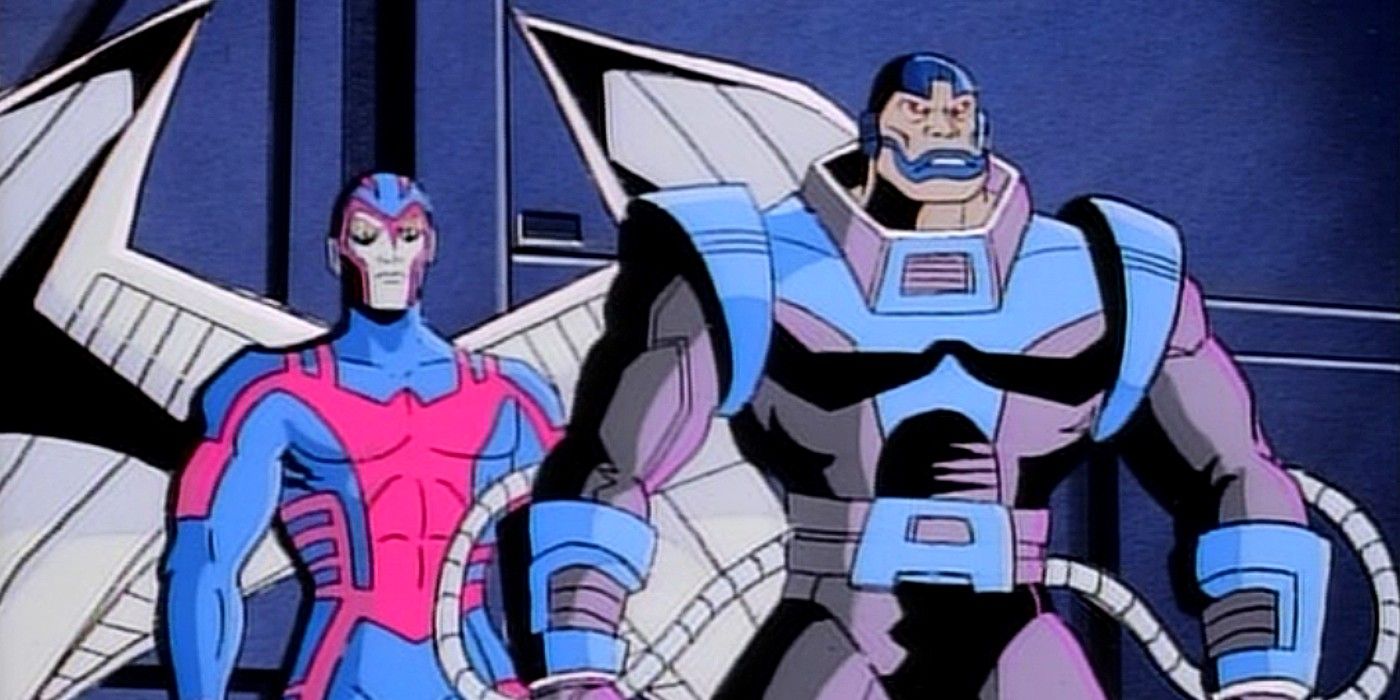 Angel's transformation into Archangel was underwhelming in the live-action movies, only touched upon briefly in X-Men: Apocalypse when Apocalypse amplified each of his Horsemen's powers. X-Men: The Animated Series, however, dedicated multiple episodes to depicting the former hero's downfall, allowing for a more detailed and compelling adaptation. Angel's transformation in the comics was a gut-wrenching and emotionally complex narrative that deserves far more than the movies proffered. X-Men: TAS did, however, give it an appropriate depiction, exploring Angel's identity crises, moral dilemmas, and the manipulation by Apocalypse, providing a deeper understanding of Angel's metamorphosis and its impact on the X-Men.
Angel's transformation into Archangel was underwhelming in the live-action movies, only touched upon briefly in X-Men: Apocalypse when Apocalypse amplified each of his Horsemen's powers. X-Men: The Animated Series, however, dedicated multiple episodes to depicting the former hero's downfall, allowing for a more detailed and compelling adaptation. Angel's transformation in the comics was a gut-wrenching and emotionally complex narrative that deserves far more than the movies proffered. X-Men: TAS did, however, give it an appropriate depiction, exploring Angel's identity crises, moral dilemmas, and the manipulation by Apocalypse, providing a deeper understanding of Angel's metamorphosis and its impact on the X-Men. 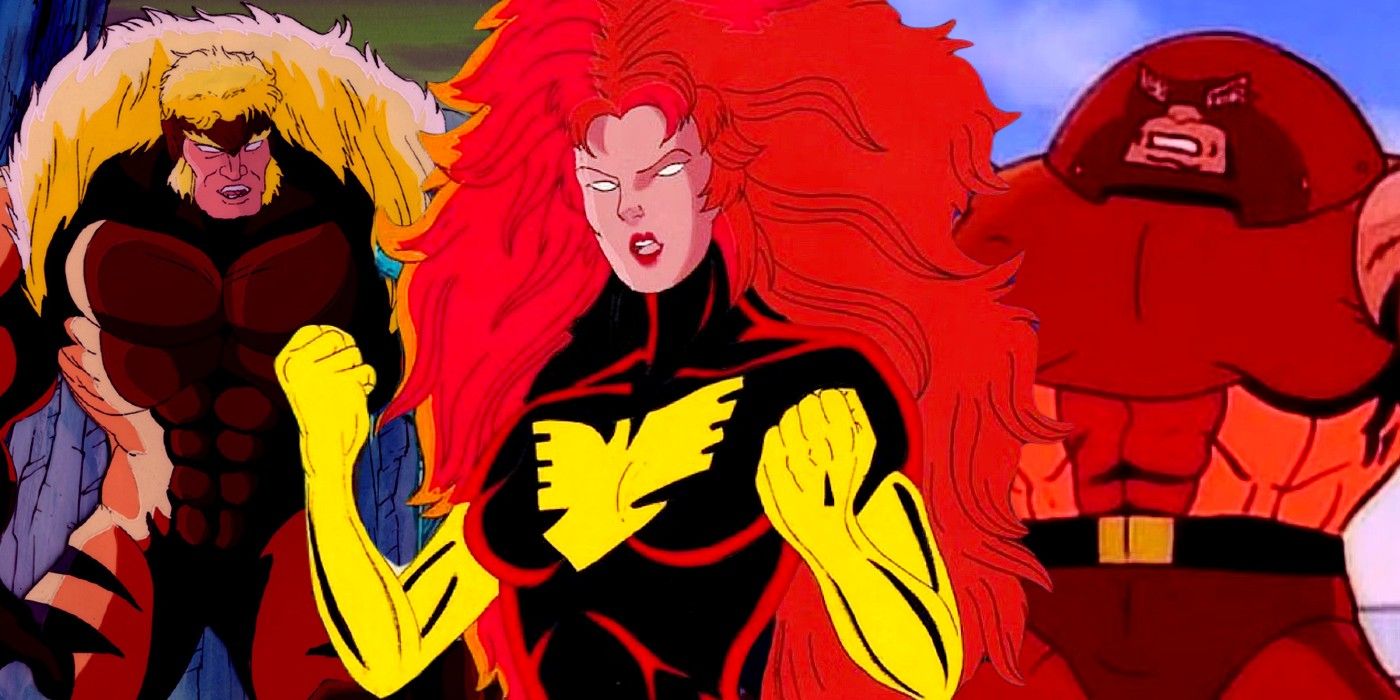 Related 10 X-Men Villains Who Were Better In The Animated Show Than The Live-Action Movies X-Men: TAS offered many incredible performances in adapting classic X-Men villains, some of which were better than the movies.
Related 10 X-Men Villains Who Were Better In The Animated Show Than The Live-Action Movies X-Men: TAS offered many incredible performances in adapting classic X-Men villains, some of which were better than the movies.9 Days Of Future Past Depicted In X-Men: Days Of Future Past (2014)
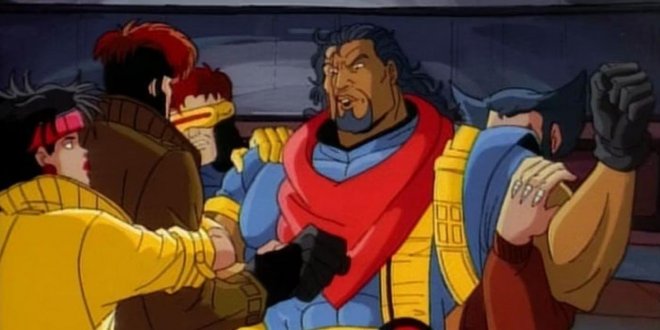 X-Men: The Animated Series delivered a far superior adaptation of "Days of Future Past" compared to the X-Men movie. The animated series captured the essence of the original storyline with more depth and fidelity - only altering the protagonist from Kitty Pryde to Bishop. It skillfully explored the dystopian future narrative, while delving into the nuanced political plot set in the present day. The series examined the emotional turmoil of central characters, fleshing out their motivations and relationships far more than the movie. X-Men: Days of Future Past suffered from time constraints and deviations from the source material.
X-Men: The Animated Series delivered a far superior adaptation of "Days of Future Past" compared to the X-Men movie. The animated series captured the essence of the original storyline with more depth and fidelity - only altering the protagonist from Kitty Pryde to Bishop. It skillfully explored the dystopian future narrative, while delving into the nuanced political plot set in the present day. The series examined the emotional turmoil of central characters, fleshing out their motivations and relationships far more than the movie. X-Men: Days of Future Past suffered from time constraints and deviations from the source material. 8 The Phoenix Saga Depicted In X-Men: The Last Stand (2006) & Dark Phoenix (2019) Close X-Men: The Animated Series adeptly showcased the complexity of "The Phoenix Saga," offering a nuanced portrayal absent in the movies. Unlike both X-Men: The Last Stand and Dark Phoenix, the animated series took its time to explore the virtuous side of the Phoenix Force. It delved into Jean's struggles with power and responsibility, emphasizing her heroic nature before succumbing to the darker forces within. By prioritizing character development and narrative depth, X-Men: TAS provided a more faithful and satisfying adaptation, capturing the essence of the iconic Phoenix Saga in the way the movies failed to achieve.
7 The Dark Phoenix Saga Depicted In X-Men: The Last Stand (2006) & Dark Phoenix (2019) Close Both the cinematic depictions of "The Dark Phoenix Saga" were convoluted and overcrowded, focusing too much on extraneous events rather than proffering a faithful rendition of the X-Men's most famous story. On the other hand, X-Men: The Animated Series offered the best Dark Phoenix adaptation. It captured the emotional turmoil of Jean Grey's descent into darkness while remaining faithful to the source material. Unlike the movies, which sometimes sacrificed character development for spectacle, X-Men: TAS explored the psychological complexities of Jean's transformation. X-Men: TAS also benefited from dedicating multiple episodes to adapting the story.
6 The Mutant Cure Depicted In X-Men: The Last Stand (2006)
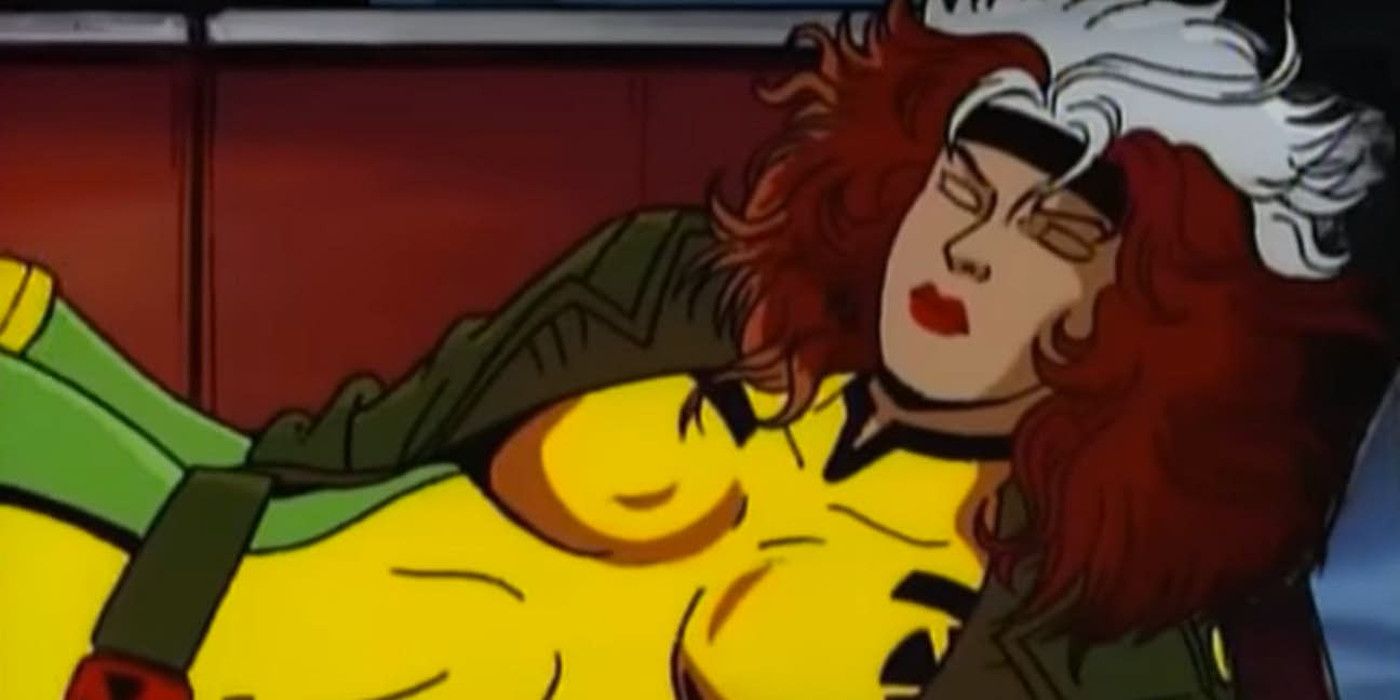 X-Men: The Animated Series adeptly navigated the complex theme of the Mutant Cure with far more finesse than X-Men: The Last Stand. Much like the Phoenix story in X-Men: The Last Stand, the Mutant Cure story wasn't given enough time to flourish effectively. X-Men: TAS centered the story more prominently across two episodes. This approach enabled a deeper assessment of the societal implications of the cure, delving into the themes of identity, discrimination, and acceptance. X-Men: TAS used mutants and the purported cure as a more effective metaphor for marginalized communities, emphasizing empathy and understanding over sensationalism.
X-Men: The Animated Series adeptly navigated the complex theme of the Mutant Cure with far more finesse than X-Men: The Last Stand. Much like the Phoenix story in X-Men: The Last Stand, the Mutant Cure story wasn't given enough time to flourish effectively. X-Men: TAS centered the story more prominently across two episodes. This approach enabled a deeper assessment of the societal implications of the cure, delving into the themes of identity, discrimination, and acceptance. X-Men: TAS used mutants and the purported cure as a more effective metaphor for marginalized communities, emphasizing empathy and understanding over sensationalism. 5 Weapon X Origins Depicted In X2: X-Men United (2003) & X-Men Origins: Wolverine (2009)
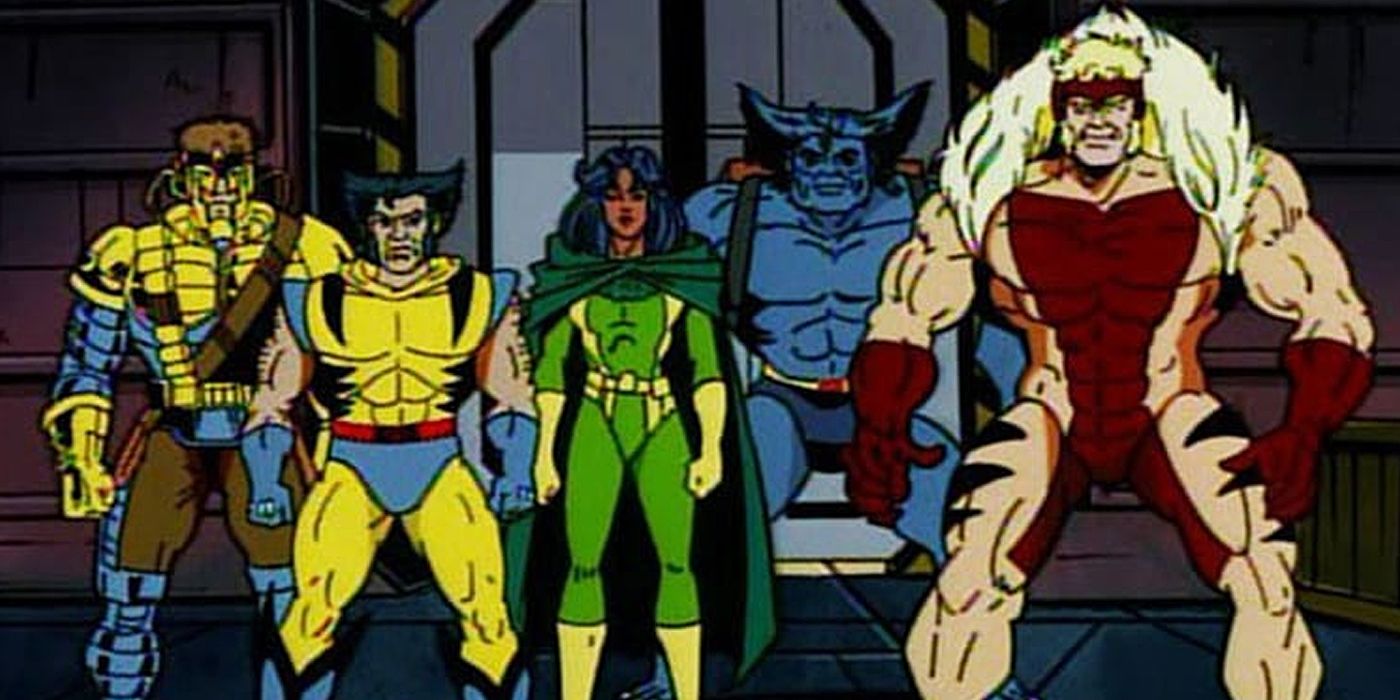 While X-Men Origins: Wolverine was somewhat faithful to the X-Men comics, it quickly veered into nonsensical narratives and weak action sequences. X2: X-Men United proffered a far more gripping depiction, though this was scant and relayed through flashbacks. X-Men: The Animated Series, on the other hand, focused more on the emotional and physical aspects of Wolverine's transformation. It depicted his struggle with memory loss, the brutality of the experiments, and the existential crisis of being a living weapon. By focusing on character development and fidelity, X-Men: TAS produced a more compelling and satisfying portrayal of Wolverine's backstory.
While X-Men Origins: Wolverine was somewhat faithful to the X-Men comics, it quickly veered into nonsensical narratives and weak action sequences. X2: X-Men United proffered a far more gripping depiction, though this was scant and relayed through flashbacks. X-Men: The Animated Series, on the other hand, focused more on the emotional and physical aspects of Wolverine's transformation. It depicted his struggle with memory loss, the brutality of the experiments, and the existential crisis of being a living weapon. By focusing on character development and fidelity, X-Men: TAS produced a more compelling and satisfying portrayal of Wolverine's backstory. 4 The Age Of Apocalypse Depicted In X-Men: Apocalypse (2016)
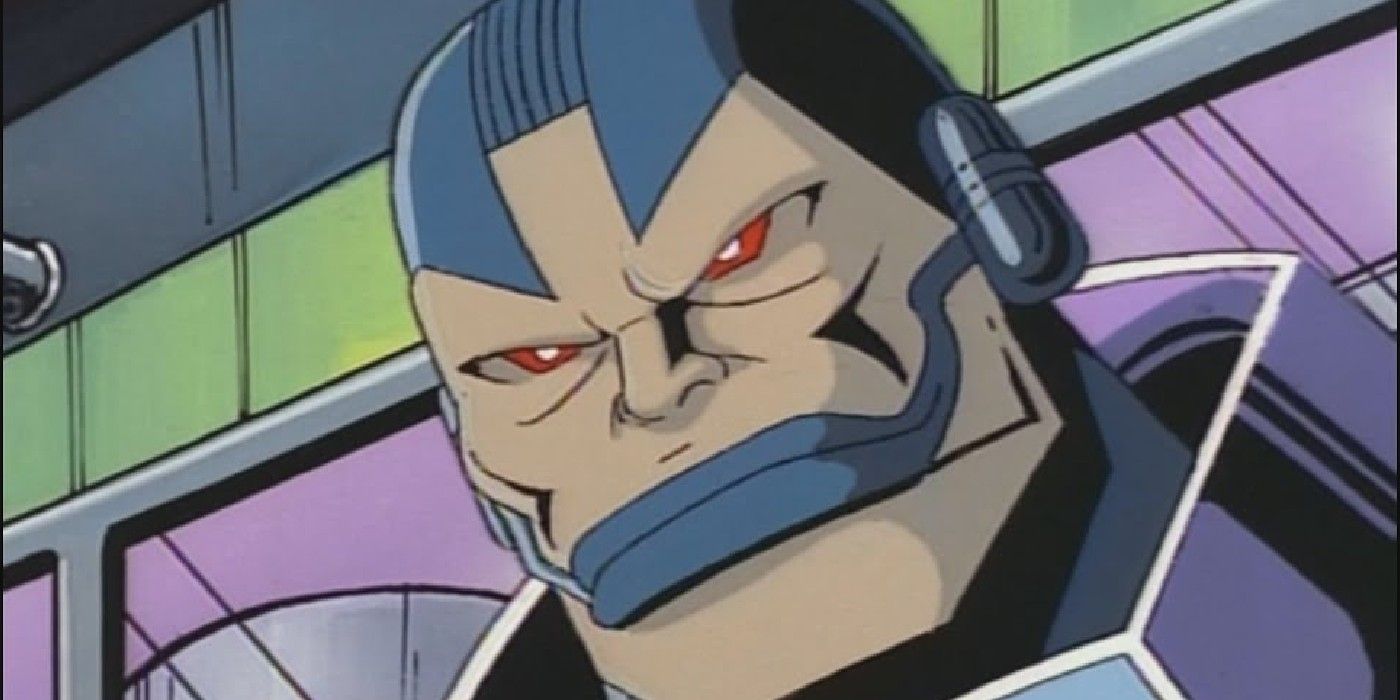 X-Men: The Animated Series perfectly captured Apocalypse's quest for power in a way that X-Men: Apocalypse struggled to. The imposing characterization and complex narratives provided X-Men: TAS with a far more compelling plot, showcasing Apocalypse's menace and imposing legacy. Apocalypse's portrayal in X-Men: Apocalypse failed to capture this, delivering an underwhelming villain and a directionless plot. The movie failed to depict Apocalypse's gravitas and iconic portrayal, ultimately paling in comparison to X-Men: TAS's interpretation. Furthermore, X-Men: TAS was able to continue Apocalypse's narrative further, exploring after the creation of his Horsemen and Apocalypse's initial defeat.
X-Men: The Animated Series perfectly captured Apocalypse's quest for power in a way that X-Men: Apocalypse struggled to. The imposing characterization and complex narratives provided X-Men: TAS with a far more compelling plot, showcasing Apocalypse's menace and imposing legacy. Apocalypse's portrayal in X-Men: Apocalypse failed to capture this, delivering an underwhelming villain and a directionless plot. The movie failed to depict Apocalypse's gravitas and iconic portrayal, ultimately paling in comparison to X-Men: TAS's interpretation. Furthermore, X-Men: TAS was able to continue Apocalypse's narrative further, exploring after the creation of his Horsemen and Apocalypse's initial defeat. 3 The Sentinel Threat Depicted In X-Men: The Last Stand (2006) & X-Men: Days Of Future Past (2014) Close X-Men: The Animated Series brilliantly depicted the Sentinel threat, surpassing its cinematic counterpart. X-Men: Days of Future Past featured short scenes with the Sentinels, which, while thrilling in the future sequences, were underwhelming in the past. The comic book story exploited the audience's familiarity with the mutant-hunting robots to explore the potential consequences. The movie had to achieve this with the opening monologue alone. X-Men: TAS proffered a full backstory, woven throughout the five seasons as an evolving narrative. This meant that several Sentinel variations could be included, such as Master Mold and Nimrod.
2 Senator Robert Kelly's Anti-Mutant Agenda Depicted In X-Men (2000) & X2: X-Men United (2003)
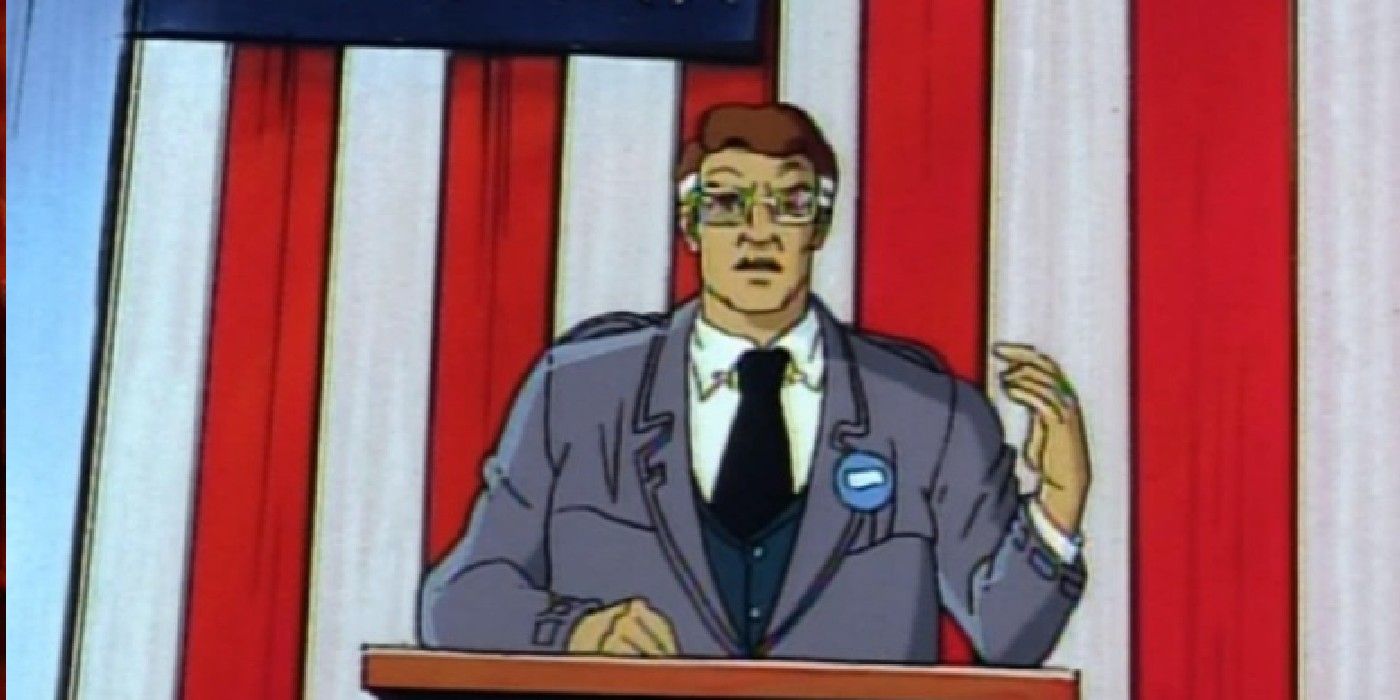 X-Men opened with a compelling debate on the mutant threat between Jean Grey and Senator Robert Kelly. It tentatively began exploring the nuanced and complex political themes inherent in the X-Men's discrimination narrative. Unfortunately, this was as far as the political plot was allowed to continue, offering a fairly curtailed depiction of Senator Robert Kelly's anti-mutant agenda. On the other hand, X-Men: The Animated Series wove Kelly's narrative throughout the entire first season, climaxing with the X-Men saving his life, prompting him to reconsider his position. As a result, X-Men: TAS offered a more faithful and detailed exploration of the politician's story.
X-Men opened with a compelling debate on the mutant threat between Jean Grey and Senator Robert Kelly. It tentatively began exploring the nuanced and complex political themes inherent in the X-Men's discrimination narrative. Unfortunately, this was as far as the political plot was allowed to continue, offering a fairly curtailed depiction of Senator Robert Kelly's anti-mutant agenda. On the other hand, X-Men: The Animated Series wove Kelly's narrative throughout the entire first season, climaxing with the X-Men saving his life, prompting him to reconsider his position. As a result, X-Men: TAS offered a more faithful and detailed exploration of the politician's story. 1 Wolverine Faces The Silver Samurai The Wolverine (2013)
 Silver Samurai is a classic Wolverine antagonist first introduced in 1974. The villain was featured in The Wolverine, but much of the character's backstory was combined with the villain Ogun - confusing the two origin stories and delivering an underwhelming final product that felt like neither character. The character only had one appearance in X-Men: The Animated Series, but his depiction was incredibly faithful and given an entire episode to explore along with Wolverine's Japanese adventures. X-Men: The Animated Series was celebrated for its fidelity, and consequently, offered some far better story adaptations than Fox's live-action movies ever could.
Silver Samurai is a classic Wolverine antagonist first introduced in 1974. The villain was featured in The Wolverine, but much of the character's backstory was combined with the villain Ogun - confusing the two origin stories and delivering an underwhelming final product that felt like neither character. The character only had one appearance in X-Men: The Animated Series, but his depiction was incredibly faithful and given an entire episode to explore along with Wolverine's Japanese adventures. X-Men: The Animated Series was celebrated for its fidelity, and consequently, offered some far better story adaptations than Fox's live-action movies ever could.  X-Men '97 X-Men '97 is the direct continuation of the popular 1990s animated series X-Men: The Animated Series. Taking up where the third season left off, Marvel's revival brings back famous mutants such as Wolverine, Storm, Rogue, Gambit, Cyclops, Beast, Magneto, and Nightcrawler, who fight villains like Mr. Sinister, the Sentinels, and the Hellfire Club.
X-Men '97 X-Men '97 is the direct continuation of the popular 1990s animated series X-Men: The Animated Series. Taking up where the third season left off, Marvel's revival brings back famous mutants such as Wolverine, Storm, Rogue, Gambit, Cyclops, Beast, Magneto, and Nightcrawler, who fight villains like Mr. Sinister, the Sentinels, and the Hellfire Club.Cast Jennifer Hale , Chris Potter , Alison Sealy-Smith , Lenore Zann , Cal Dodd , Catherine Disher , Adrian Hough , Ray Chase , Chris Britton , George Buza Franchise Prequel Production Company Streaming Service(s) Disney+
[圖擷取自網路,如有疑問請私訊]
|
本篇 |
不想錯過? 請追蹤FB專頁! |
| 喜歡這篇嗎?快分享吧! |
相關文章
tag_marvel









